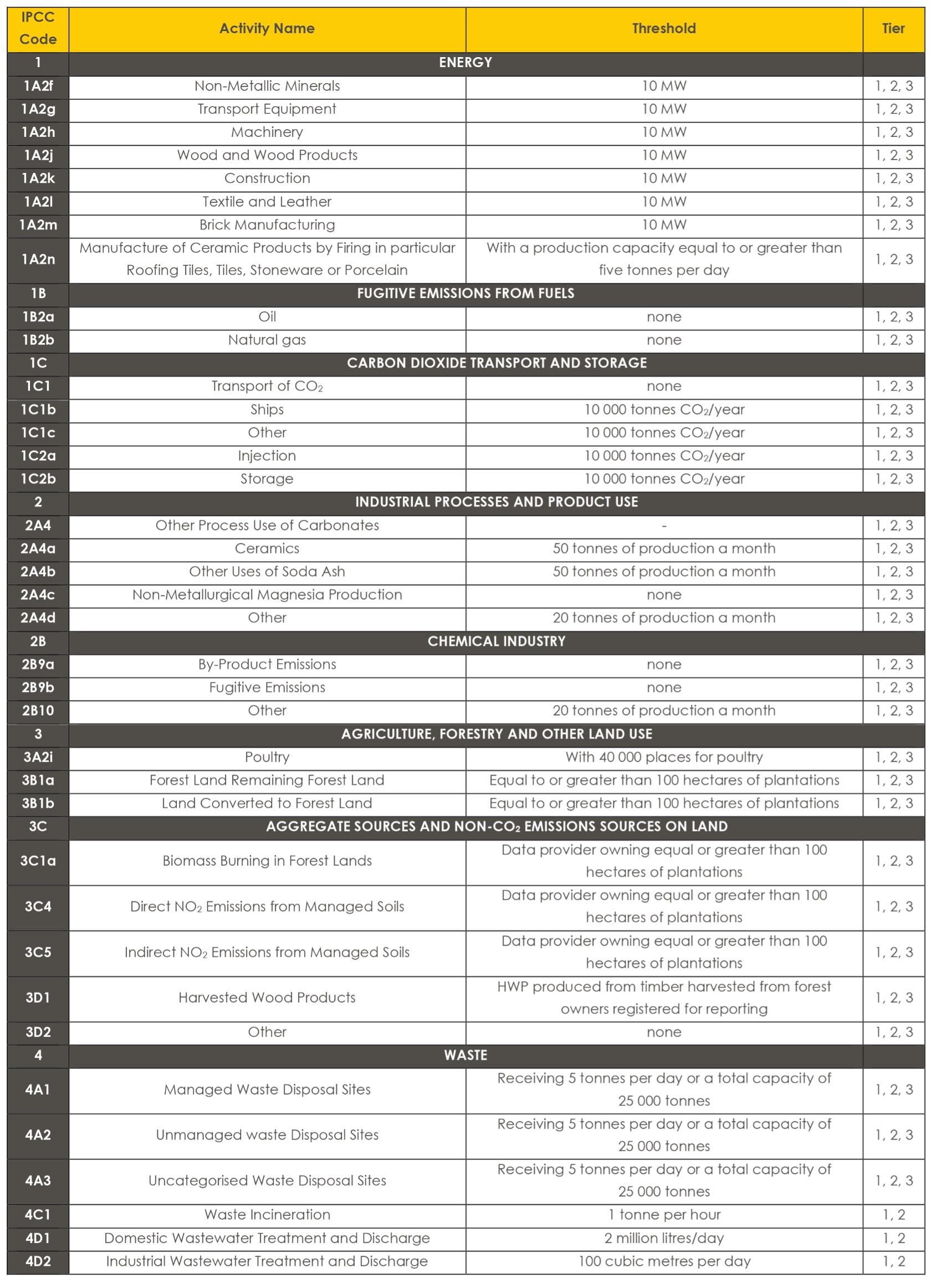Greenhouse Gas Reporting
What is GHG EMISSIONS REPORTING (NGERS)?
South Africa is party to the Paris Agreement and has committed to significantly reduce Greenhouse Gas (GHG) emissions by 2030. These reduction goals are recorded in South Africa’s Nationally Determined Contribution (NDC) under the auspices of the United Nations Framework Convention on Climate Change (UNFCCC).
Who can I speak to?
Sasha heads up our Advisory deparment and would love to support you.
To give effect to this, the National Greenhouse Gas Emission Reporting Regulations (NGERS) were promulgated in 2017 in G.N. 275 with the aim of quantifying GHG emissions from South African companies. According to the Regulations, any data provider that undertakes specific activities (above a certain threshold) that release GHG emissions, is required to report their GHG emissions to the Department of Forestry, Fisheries and the Environment (DFFE) by the 31st of March each year. A data provider is defined as a natural or juristic person including its holding company, corporation or legal entity, including all of its subsidiaries and facilities over which it has operational control.
The threshold for data providers who produce energy for their processes (e.g. by operating boilers that are fired on coal, paraffin, gas, or heavy furnace oil [HFO]) is 10 MW Net Heat Input (NHI). This rating is cumulative. So if, for example, you have six small John Thompson package boilers, each of 2 MW, then the cumulative rating is 12 MW and GHG reporting is mandatory. The cumulative rating remains 12 MW, regardless of whether these six boilers are located at a single facility or many facilities, provided that all facilities are under the operational control of the same data provider.
Likewise, if you were to own 11 office parks, and had 1 MW backup diesel generators to mitigate load shedding at each office park, then the total NHI would be 11 MW and GHG reporting would be required. Please remember that it is not the kVA rating of the generators, but the NHI, that is summed. Please contact us to calculate the NHI from the kVA rating for you.
In previous years, default Tier 1 methodologies could be used to calculate GHG emissions from all activities. However, since the 2022 reporting period, Tier 2 and Tier 3 methodologies have had to be used to calculate CO2 emissions from activities that fall under certain IPCC codes (Intergovernmental Panel on Climate Change Codes). Tier 2 and Tier 3 methodologies increase the complexity of GHG emission calculations when compared to the Tier 1 methodology.
From a reporting perspective, GHG emissions are comprised of carbon dioxide (CO2), methane (CH4) and nitrous oxide (N2O). It is only CO2 emissions that are calculated using Tier 2 and 3. CH4 and N2O emissions are still calculated using Tier 1. A brief overview of the tiered approach is presented in the table below.

Some activities are still permitted to calculate their CO2 emissions using Tier 1 (although they may choose to use Tier 2 or 3). A list of these activities is presented in the table below, and is obtained from the Methodological Guidelines for Quantification of Greenhouse Gas Emissions:

The DFFE held a training session for GHG data providers on the 23rd of November 2023. The training entailed a detailed overview of the South African Greenhouse Gas Emissions Reportings System (SAGERS) and queries regarding SAGERS were addressed. A link to the training video, as provided by the DFFE is presented below:
Although in previous years SAGERS has been used to make one’s submission, in 2024, GHG submissions will be manual. It is our desire to give you peace of mind that your GHG submission has been performed correctly, and to free up your time to focus on your operations, so please contact Yellow Tree to perform your manual submission.
Should you have already calculated your GHG emissions, please feel free to contact us to perform a GHG verification. Additionally, should you wish to look beyond the Scope 1 emissions that must be reported on SAGERS, to your Scope 2 and 3 emissions, we would love to perform a carbon footprinting study for you. It is often said that you cannot manage what you don’t measure – and carbon footprinting is that measurement. If you would then like to act upon your carbon footprint, we can compile a decarbonisation strategy for your organisation.
Let’s connect!
